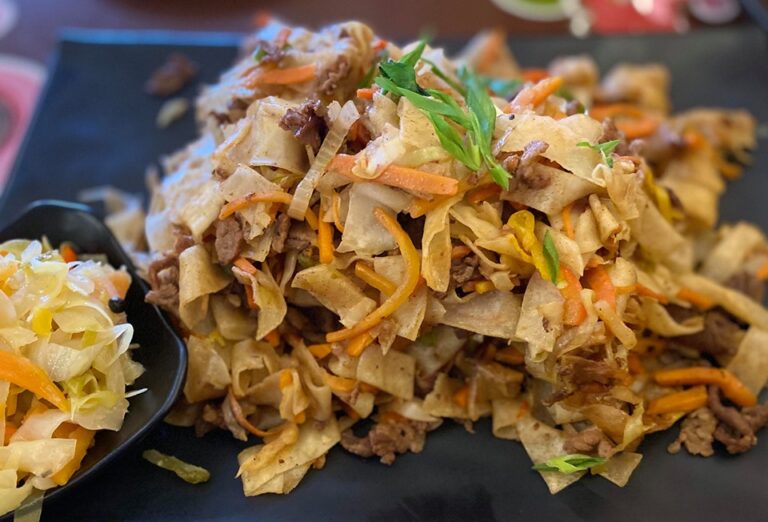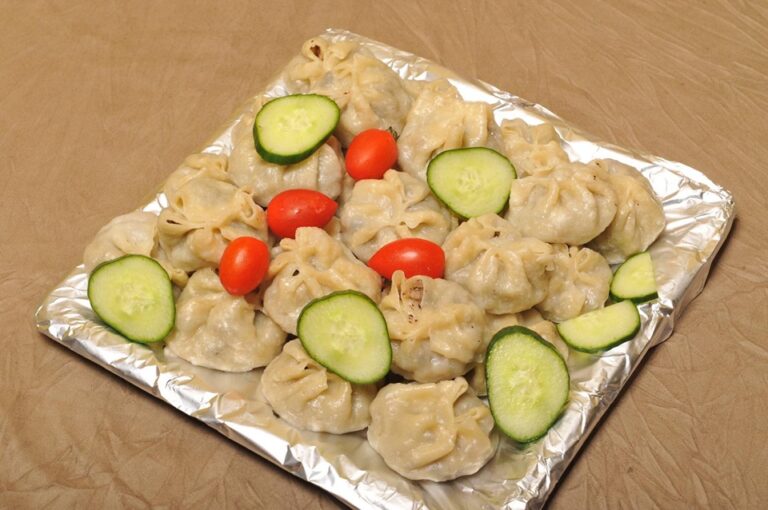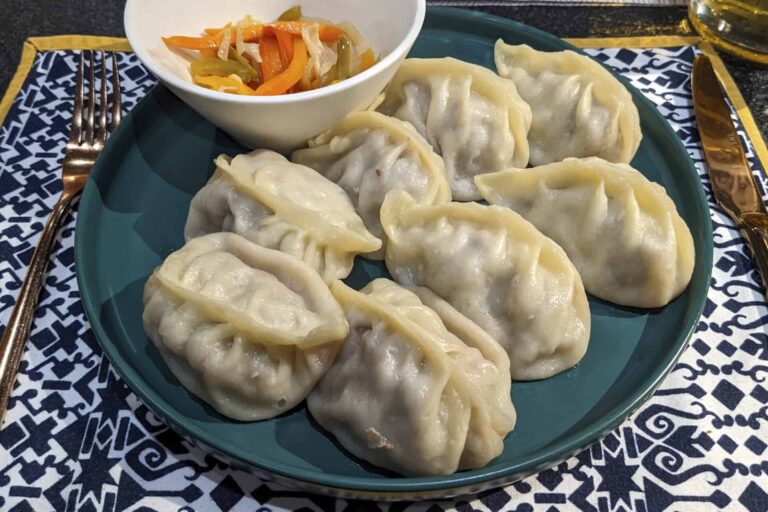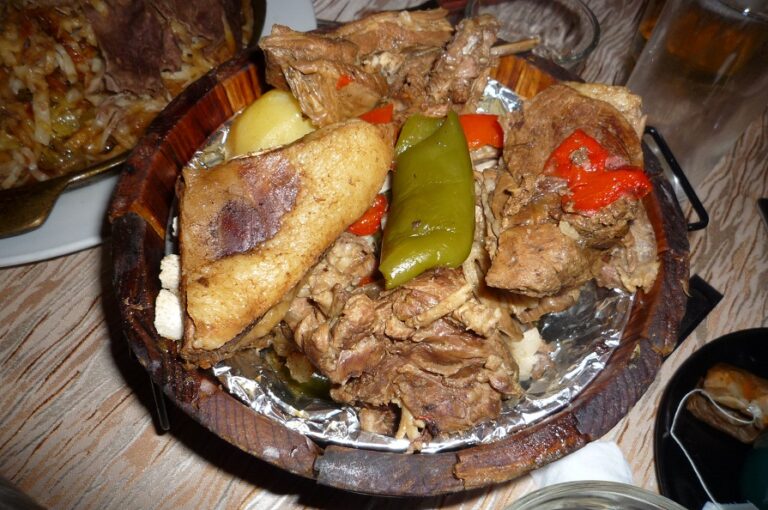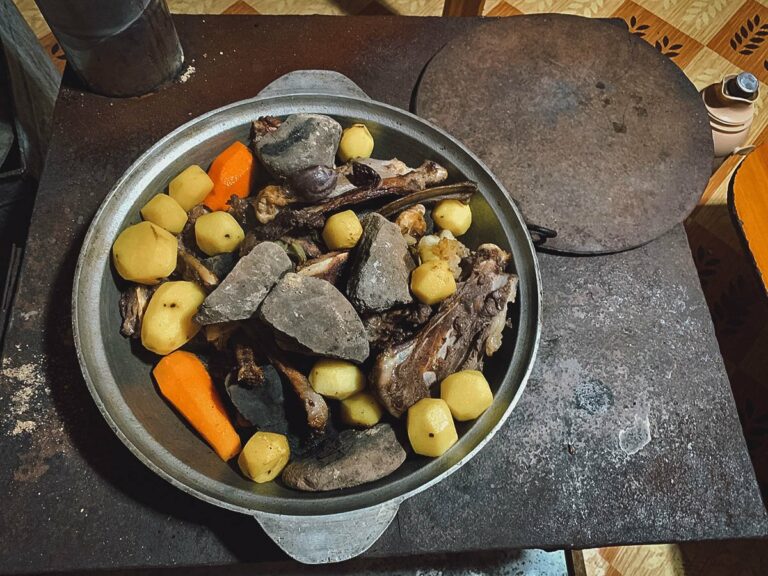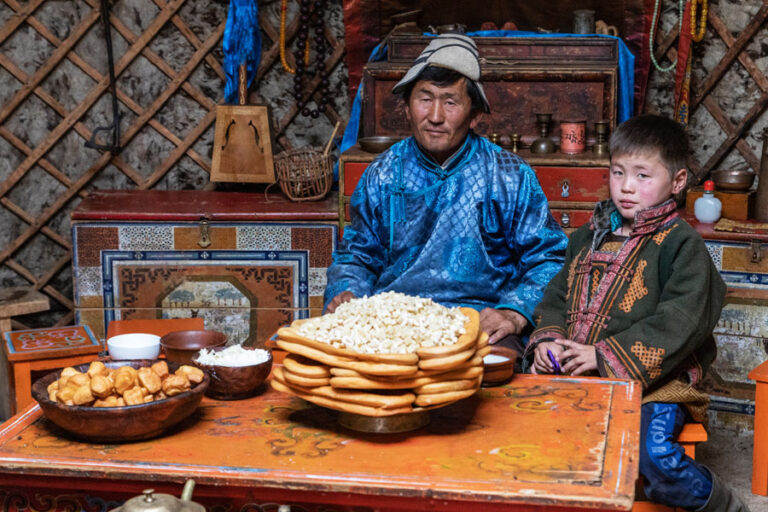Introduction: The Nomadic Lifestyle and Mongolian Cuisine
Mongolia is a landlocked country in East Asia known for its vast landscapes, nomadic culture, and unique cuisine. The nomadic lifestyle of Mongolian tribes has had a major influence on their cuisine, which is primarily meat-based and highly nutritious to sustain the harsh environment. Mongolian cuisine is characterized by its simplicity, reliance on natural ingredients, and traditional cooking methods.
The Importance of Livestock in Mongolian Cuisine
Livestock, particularly sheep, goats, and horses, have played a crucial role in Mongolian cuisine and nomadic life. Meat is a staple in Mongolian cuisine, and the nomads consume every part of the animal, from the meat to the organs and even the blood. They also use the fur and skin for clothing and shelter. Mongolians have developed various cooking methods to prepare meat, such as boiling, frying, grilling, and roasting. Airag, fermented mare’s milk, is a popular beverage that is consumed during special occasions.
The Significance of Dairy Products in Mongolian Cuisine
Dairy products, such as milk, yogurt, cheese, and butter, are an integral part of Mongolian cuisine. Nomads rely on dairy products as a source of protein and fat, which provide essential nutrients for survival in the harsh environment. Mongolians also use dairy products in their cooking, such as in soups, stews, and tea. Aaruul, dried curd, is a popular snack that is made from milk curdled with rennet or sour milk.
The Role of Herbs and Spices in Mongolian Cuisine
Mongolian cuisine uses herbs and spices to enhance the flavor of meat and dairy products. Mongolians use native herbs and spices, such as cumin, coriander, garlic, and onions, in their dishes. They also use wild herbs, such as nettle, thyme, and mint, to add flavor and nutrition to their food. Mongolians also use salt, pepper, and soy sauce, which were introduced through trade with China and Russia.
Traditional Cooking Methods in Mongolian Cuisine
Mongolians use traditional cooking methods to prepare their food, such as using a wok, a cast-iron pot, or a clay oven. One of the most iconic Mongolian dishes is khorkhog, which is made by cooking meat and vegetables in a hot stone pot with hot stones. Another popular dish is buuz, steamed dumplings filled with meat and vegetables. Mongolian barbecue, where meat is grilled on a hot plate, is also a common dish in Mongolia.
Conclusion: The Preservation of Mongolian Cuisine and Heritage
Mongolian cuisine reflects the nomadic heritage of the Mongolians, and it has been preserved for generations. However, with the increasing influence of Western and Asian cuisines, there is a risk of losing traditional Mongolian cuisine. Efforts are being made to promote and preserve Mongolian cuisine and heritage through food festivals, cultural events, and culinary schools. By preserving Mongolian cuisine, we are also preserving the rich nomadic heritage and culture of the Mongolian people.

